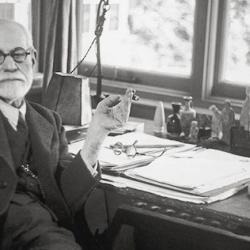According to Fintan O’Toole’s NYRB review, James Shapiro’s The Year of Lear helps to unravel some of the mysteries of that most haunting of Shakespeare’s tragedies. O’Toole nicely captures why the play is so haunting: “King Lear is not apocalyptic, it is far worse. Instead of deserved damnation and merited salvation, there is merely the big fat O, the nothing that haunts the play, the ‘O, O, O, O!’ with which Lear expires. Even Shakespeare seems to have thought twice about this utter annihilation of hope and justice.”
Shapiro makes some sense of what Shakespeare was up to by placing the play in the early years of the reign of James I. James was much more a patron of the theater than Elizabeth, and Shakespeare’s companies performed at court with greater frequency. James was also Scottish, and had the ambition of ruling Britain, the entire island, with Scotland and England as one flesh. Shakespeare wrote what his patron liked: Scottish jibes disappear from the plays, the word “England” diminishes, and the word “Britain” becomes much more common.
Shakespeare also pursued James’s intellectual and political interests, and stuck them into his plays. James’s interest in demon possession is one of the major impulses behind Lear. As O’Toole summarizes: “Samuel Harsnett . . . published A Declaration of Egregious Popish Impostures in 1603. Shakespeare, picking up on the king’s curiosity, read Harsnett’s book. Over eighty passages in King Lear are indebted to the Declaration’s descriptions of people acting as if they are possessed—the very guise that Edgar takes on when he becomes Poor Tom, the wandering beggar. . . . Some of the names of devils that torment Poor Tom are taken directly from Harsnett: Puff, Pure, Frateretto, Flibbertigibbet, Mahu, Smulkin, Obidicut.”
Shakespeare also picked up on the Jacobean insistence on union within the kingdom of Britain. Lear makes this point from the back side, by showing the horrifying consequences of division: “There is no doubt that the impetus for the play is to support James’s campaign to unify Britain by showing the horrors of a disunited kingdom. Lear’s dismembering of his kingdom is the negative correlative of James’s destiny to make its body whole again. An anonymous play about Lear (or Leir), The True Chronicle History of King Leir, first staged around 1590, was printed in 1605 by a publisher who obviously saw the relevance of the story to James’s project of reinventing Britain. Shakespeare clearly admired this opportunism. In the first printed version of his own play, he sometimes absent-mindedly uses ‘Leir’ instead of Lear.”
Shakespeare was not, in Shapiro’s telling, a sycophant. He took up James’s interests but extrapolated in unexpected directions. In Macbeth, he brought up James’s concern with Jesuit “equivocation,” but instead of placing blame on Catholics, Shakespeare depicted a Scotland where equivocation was the form of everyday speech, where equivocation was not the product of conspiracy but inherent in the very exercise of power.
He does something similar in Lear, “assaulting” the happier ending in Holinshed and other earlier version “with extraordinary psychological violence in which the idea of a satisfactory (let alone happy) ending is exploded.” In short, “James’s interests have given him the opportunity to write a play about the collapse of all political order and that in turn gives him the opportunity to show what authority really looks like when it is not propped up by power.”
And even more deeply, Shakespeare turned the Lear story into a memento mori for princes, an Ecclesiastes-like warning on the vanity of power: “The divine right of kings, so insistently upheld by James, has become a thing of nothing. The King’s Man in his red royal livery plucked his master’s anxiety about the need for unquestioned authority and used it to summon up the deeper fear that, in their most secret selves, must haunt all kings.”















